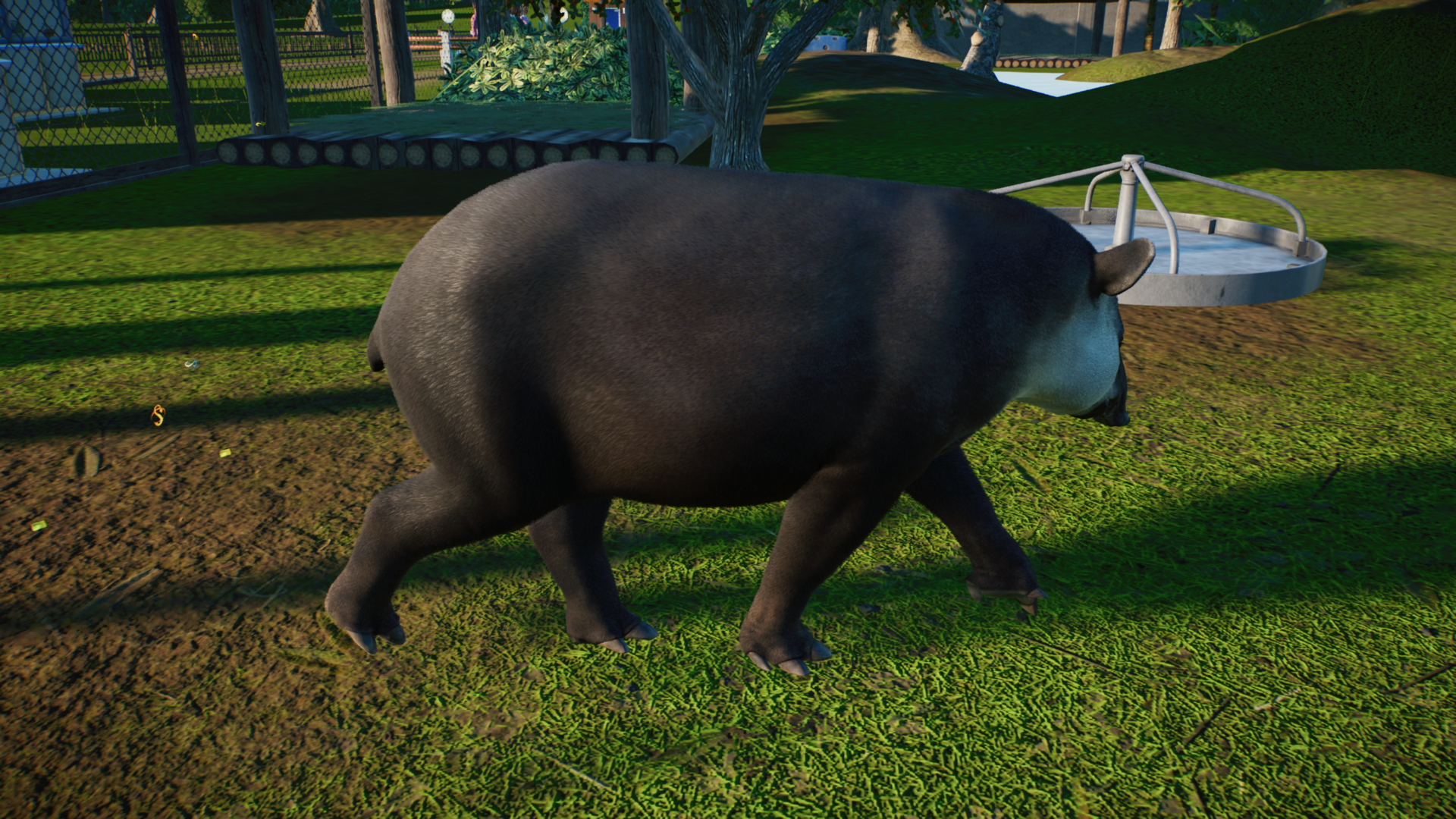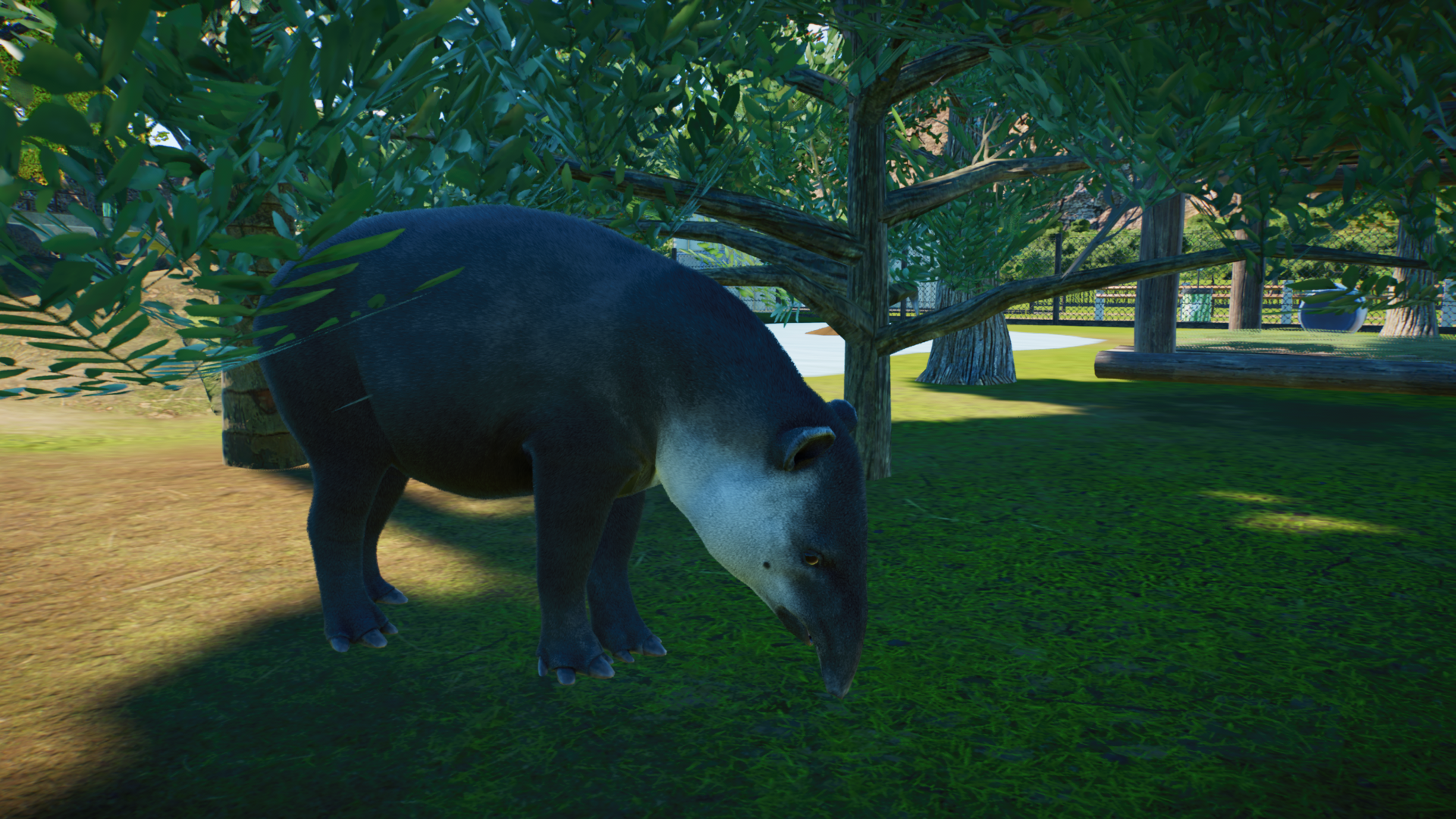Zookeeper Series: Baird's Tapir
/This is a Baird’s Tapir in Planet Zoo. Planet Zoo has very realistic looking animals. Continue reading to learn more about the Baird’s Tapir.
Personal Update:
My first child arrived into the world on June 24th. We had a bit of a rocky start with lots of complications during delivery. Thankfully, we are both doing just fine now. I have a lot of things to share about my hospital experience and my thoughts on the way things were handled, what items I found handy for my recovery, my favorite baby products, self-care during pregnancy, and more. At the moment, though, my energy is limited and I’d prefer to distract myself with Planet Zoo. :) This post will be a bit of entertainment and a bit of intellectual self-care as I’m going to not only show you my game progress but teach you about one of the endangered animals that is in the game.
Here are two exhibits housing endangered amphibians of South American rainforests.
Planet Zoo
What is Planet Zoo?
A fun video game that touches on a lot of self-care categories for me. If you are familiar with Zoo Tycoon, Planet Zoo is its spiritual successor. It is a resource management game that involves creating and managing a zoo. The game has a lot of depth and I continually try to improve how I create my zoos. Recently, I’ve been focused on adding a lot of detail and a bit of realism to my game.
What kinds of self-care?
Of course, it is inner child or play self-care since it is a game, but it is more than just that. It is a resource management game that requires a lot of thinking, planning and problem-solving, so it is also great intellectual self-care. The game really focuses on conservation and you learn a lot about animals, the environment, and conservation issues, so it can also provide spiritual self-care. The building aspects of the game require a lot of creativity and therefore it can also count as emotional self-care. It provides all of these for me.
Tapirs are excellent swimmers, so the habitat I created has a lot of water areas for them to explore.
Conservation Park
My new zoo is called Conservation Park. I was inspired by one of the achievements that I don’t have yet which involved breeding a certain number of endangered species. I don’t recall the exact number at the moment, but it doesn’t matter just yet. I decided to build a zoo that focused on caring for and breeding endangered animals which treats the guests as a way to raise money for their conservation efforts. For an extra challenge, I set the difficulty of this zoo to “hard”. The zoo is located somewhere in southern North America. The first animal the zoo adopted was a Baird’s Tapir.
Here’s another image of the first tapir I adopted.
Baird’s Tapir
What is a tapir?
The tapir is a fairly large mammal that looks a bit like a pig except it has a long prehensile nose (sort of like a tiny elephant trunk). It is an herbivore that lives in forests and jungles. You can find it in the Americas, as well as southeast Asia. Tapirs are shy and prefer to run away from confrontation, but if provoked they can bite with powerful jaws. There are four species of tapir. A possible fifth species is currently disputed.
What is Baird’s Tapir?
Baird’s Tapir is the name given to the species that resides in Mexico, Central America and northern South America. It is the largest land mammal in Central America. Baird’s Tapir is commonly referred to as “danta”.
Baird’s Tapirs are excellent swimmers and fast runners. They are great on steep slopes as well. They seem to excel at movement. They are able to sink to the bottom of a stream and walk on the bottom. They enjoy swimming (and sinking) so can often be found in the water.
This is a broader view of the Tapir’s habitat showing plants, water features and some enrichment.
Fun Facts!
Their gestation period is 400 days. About 43% longer than humans. I can’t imagine being pregnant for that long- yikes!
Typically, they only give birth to one offspring at a time.
Babies have adorable spots and stripes.
They have a symbiotic relationship with some bird species- the birds eat the ticks from their fur.
Predators only include humans, crocodiles, jaguars and pumas. Pumas only go after the young, and the jaguars are taking a big risk when they go after a tapir.
A group of tapirs is called a “candle.”
The tapir’s closest living relatives are rhinos and horses (not pigs or anteaters!)
Another image of the tapir in my zoo.
Conservation Issues
Baird’s Tapirs are endangered with less than 5,500 individuals in the wild. They are particularly vulnerable because of their slow reproduction rate. In addition to only having one offspring at a time and a gestation period of 400 days, there are usually about 24 months in between births. Hunting is illegal in many areas, but that is not well enforced and contributes to their decline. However, the main reason for their declining population is deforestation which leads to habitat loss.
Another view of the habitat. This is from a viewing area for guests above the habitat, looking down.
Resources
Learn more about tapirs: https://tapirs.org/tapirs/bairds-tapir/
Tapir conservation: http://www.edgeofexistence.org/species/bairds-tapir/
See a really cute video of a baby tapir having the “zoomies”: https://www.zoonewengland.org/franklin-park-zoo/our-animals/mammals/hoofed/bairds-tapir/
Yet another shot of the tapir habitat in my zoo.
New Park
Sadly, by the time I finished this post, Conservation Park was already bankrupt. This was my first time playing on hard mode and I didn’t pay enough attention to my finances. The habitat I created after the Baird’s Tapir was for the Giant Otter. The otters food was very expensive and they required water treatment for their very large and very wet habitat.
I’ve created another zoo- once again on hard mode. It’s also focused on conservation, but it is a small education center at the moment that is just focused on smaller animals and spreading a conservation message.
A view of one of the shelters in the tapir habitat surrounded by trees to give them the feeling of being in the forest.


















